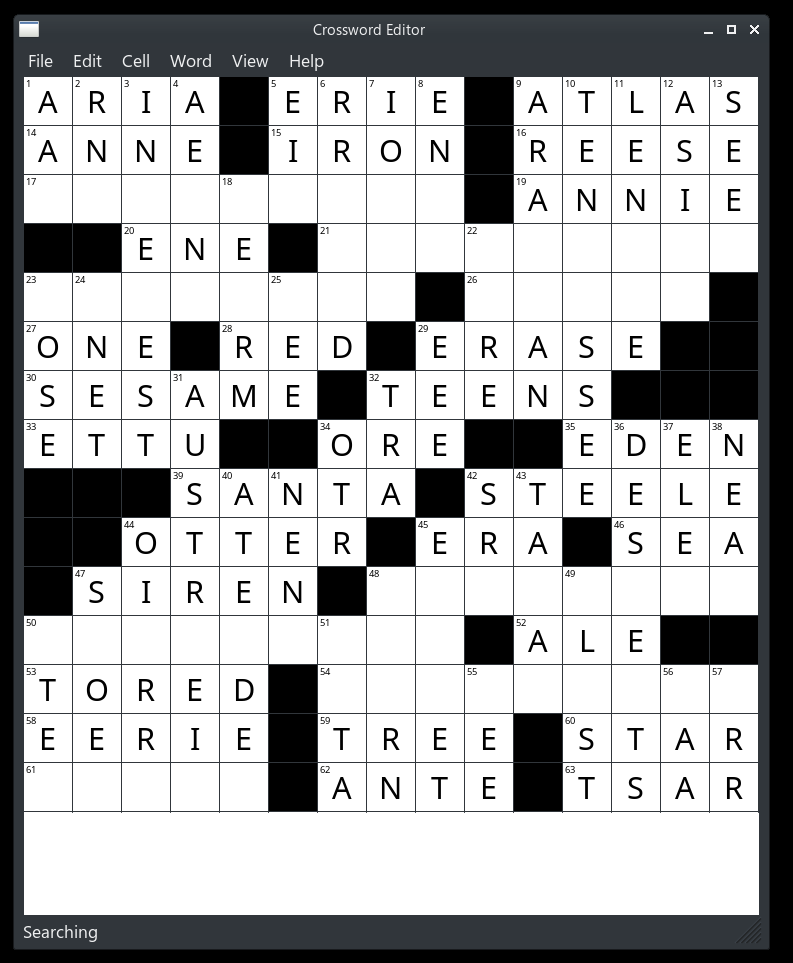A complete cross-platform* guided user interface for creating, editing, and solving crossword puzzles.
Word lookup, fill algorithm, puzzle creation, PDF export
full testing suite, improved database normalization, compilation to WASM and web frontend port
Portable: ideally compiles on everything, including WebASM.
Readable: code well-documented and human-readable.
Performant: optimized for maximal performance.
Q: Why C++/WxWidgets not Python or a webapp?
A: Performance and low-level control over data structures is critical especially for the long-term project that I expect this to become.
Requires C++11, wxWidgets and Cairo.
Tested on Arch Linux.
mkdir build
cd build
cmake ..
make
Not tested.
Tested in Visual Studio 2022 running on Windows 11.
Recommended: use vcpkg to install Cairo and just use the installer for wxWidgets.
Create build directory and cd into it (not sure if the VCPKG argument is needed).
cmake .. -DCMAKE_TOOLCHAIN_FILE=%VCPKG_ROOT%\scripts\buildsystems\vcpkg.cmake
In VS: Change from console application to Windows (Linker->System->SubSystem)
To fix blurry UI: add AMD dpi manifest (Manifest Tool->Input and Output) %WXWIN%/include/wx/msw/wx_dpi_aware.manifest
To load a database at startup:
./crossword-gui -d path_to_database
Not tested or built yet.
Documented with Doxygen.
Tests not written yet.
MIT License
I would like to acknowledge the people in my life who got me addicted to the NYT crossword. You know who you are.
A short description of the fill algorithm: we use a modified backtracking/depth-first search, where we value nodes in an order based on two values: 1) a frequency word taken from the database to favor common English words and 2) a letter frequency score, to favor words with common letters that should make for a better branch to traverse.
Ideally, the nodes are searched in order based on letter frequency score, while a cutoff is imposed on the frequecy (readability) score.
Source
We use a custom crossword file format.
